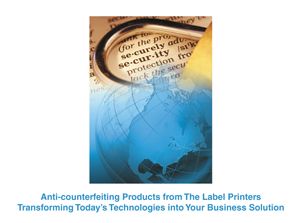
Taggants are a “chemical barcode” – uniquely encoded, microscopic materials or chemistries that are incorporated into a product to give it a “fingerprint”.
After domestic terrorist attacks, such as the World Trade Center car bombing (1993), Oklahoma City (1995), and this year’s Boston Marathon bombings, taggants in explosives become part of the general national debate on gun/weapon control. Taggant technology was originally developed in the 1970s by 3M for the post-detonation tracing of explosives (although taggants can also be used to detect a bomb before detonation). But organizations ranging from mining industry trade associations (because of cost and safety issues) to the NRA (second amendment – “de facto” weapons registration – issues) have sought to keep post-blast taggants (and their registration) out of explosives.
Some of the most common uses for taggants are:
Tax stamp authentication
Banknote authentication
Cigarette anti-counterfeiting
Alcohol anti-counterfeiting
Pharmaceutical anti-counterfeiting
Automotive parts
Fuel
Energy products
Like many identification solution providers, TLP finds taggants to be a valuable asset to their customers, especially when the requirement demands a more forensic solution. Non-visual counterfeiters may not know if or what the taggant is – and they can’t really duplicate it. Lori Campbell, Chief of Operations at The Label Printers says, “Picture a funnel. At the top of the funnel are 25 cargo loads of product. Customs can’t verify the legitimacy of all 25 cargo loads – which means that distributors, retailers, and/or field agents are needed to handle verification. And they need at least one non-visual means of doing so. The technology is also very useful in court cases, when the brand owner needs a legal authentication approach. Taggants are a proven, legitimate way to authenticate products.”

Taggants and the corresponding authentication equipment can be costly, so it’s necessary to match need and utilization. Brand owners can elect to use taggants in conjunction with other technologies, when multiple levels of authenticating are needed.
What do you think? Is it worth the cost to stop counterfeiting? Is it important to differentiate between protecting brands and intellectual property – and deterring violence? Are taggants in explosives a second-amendment issue?



